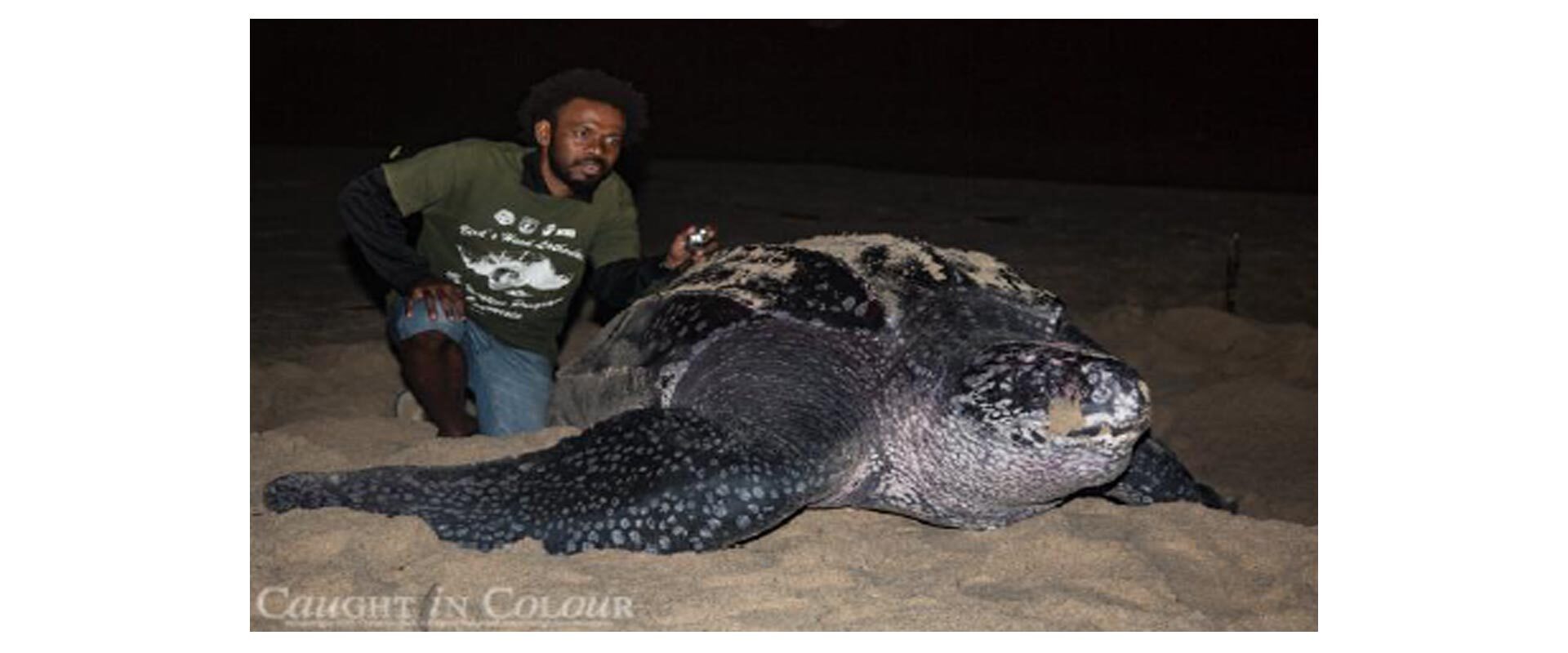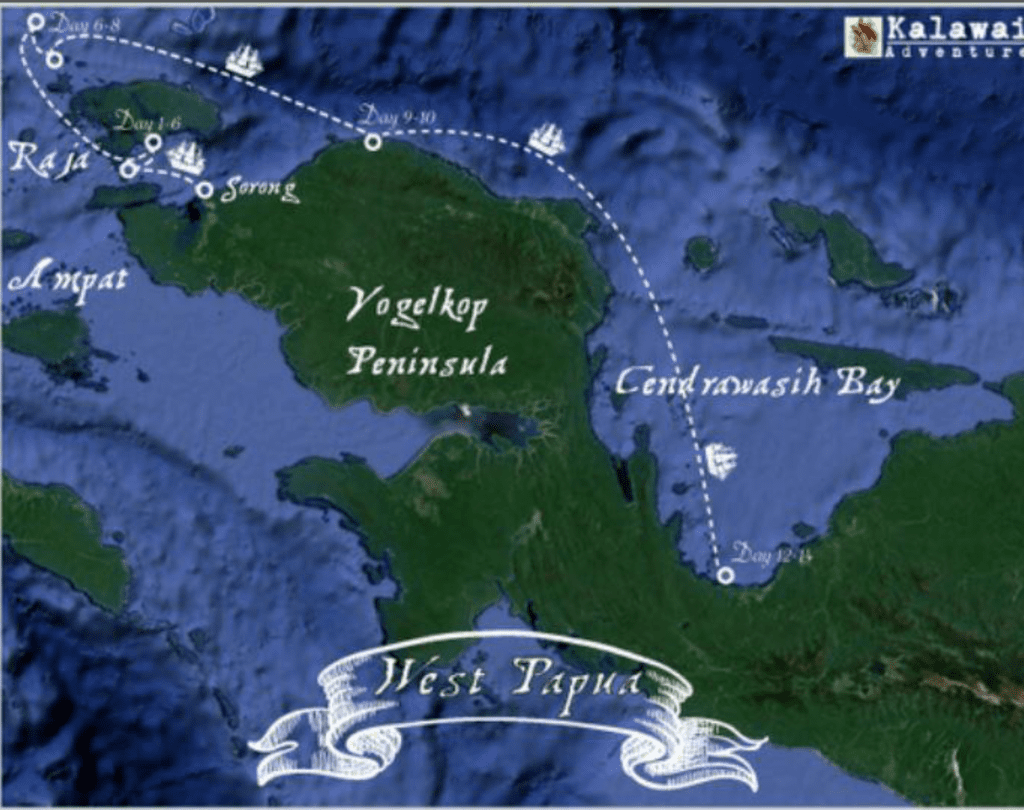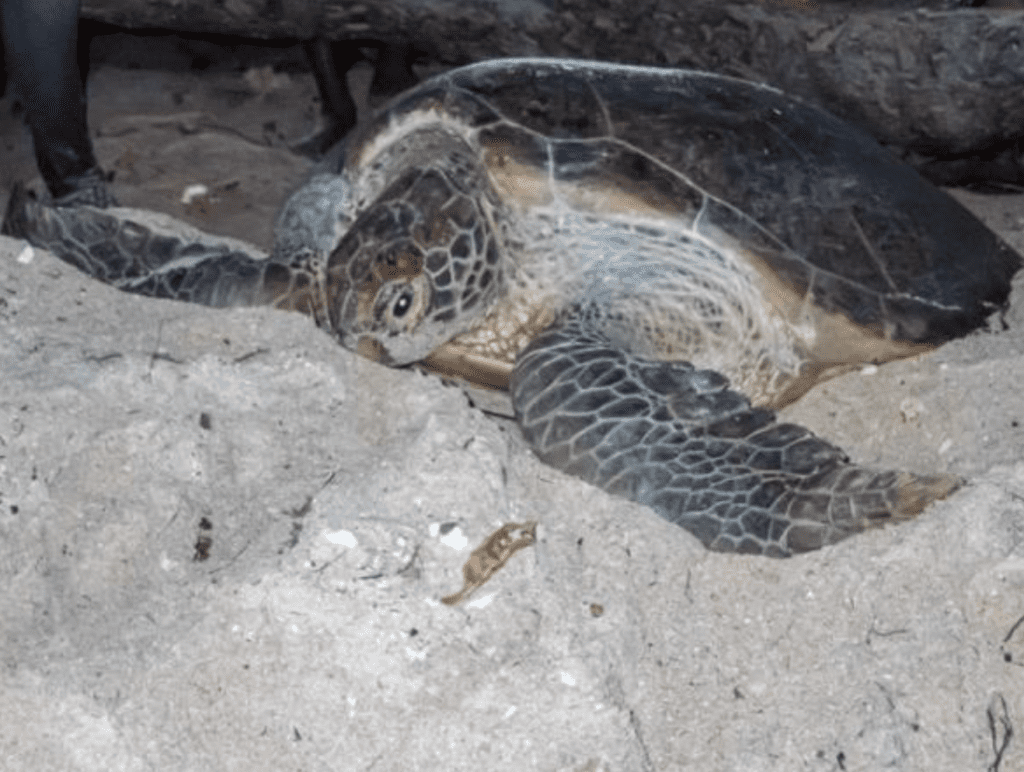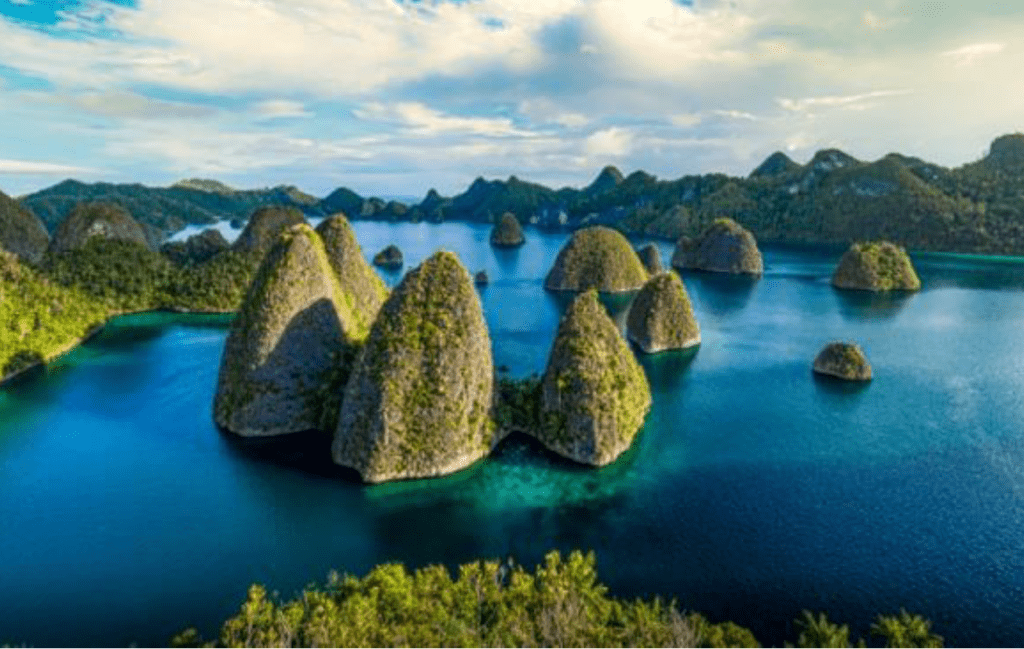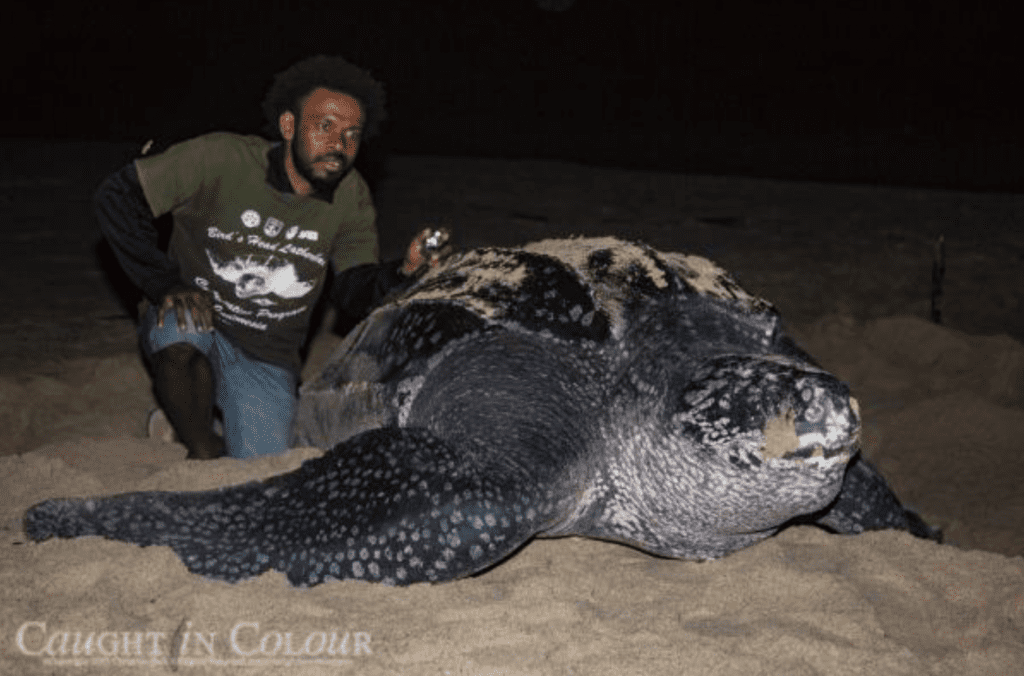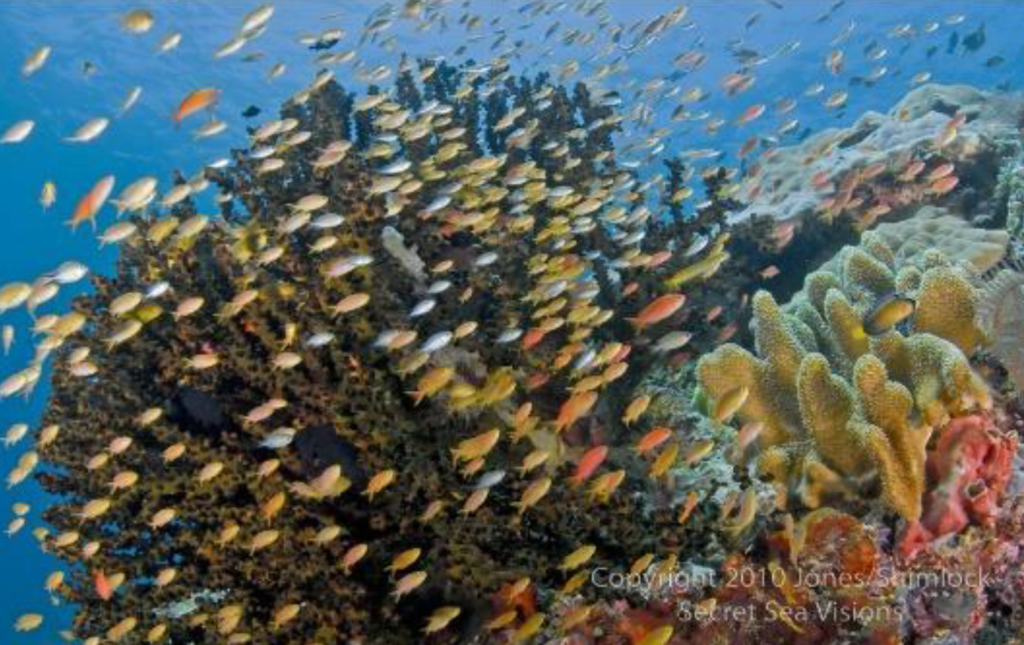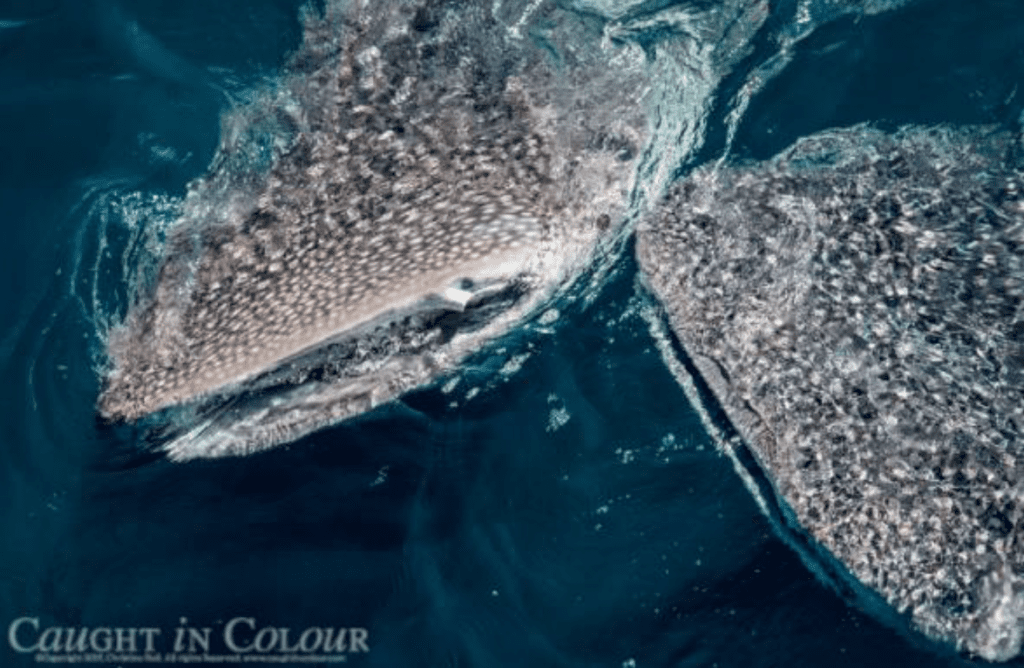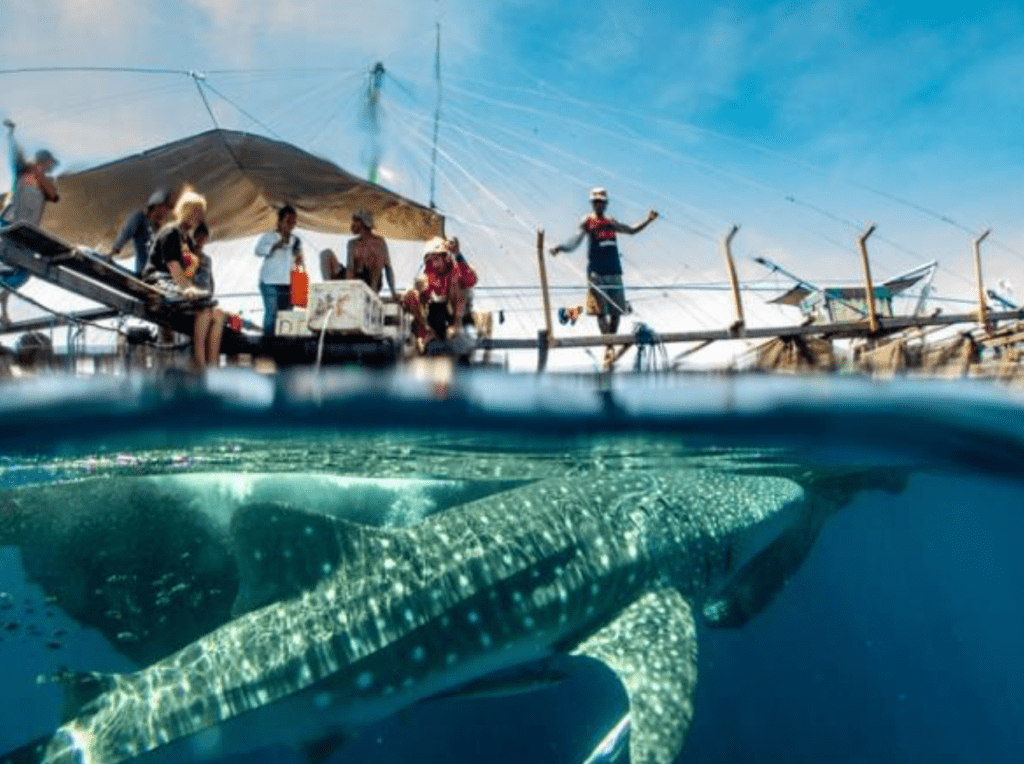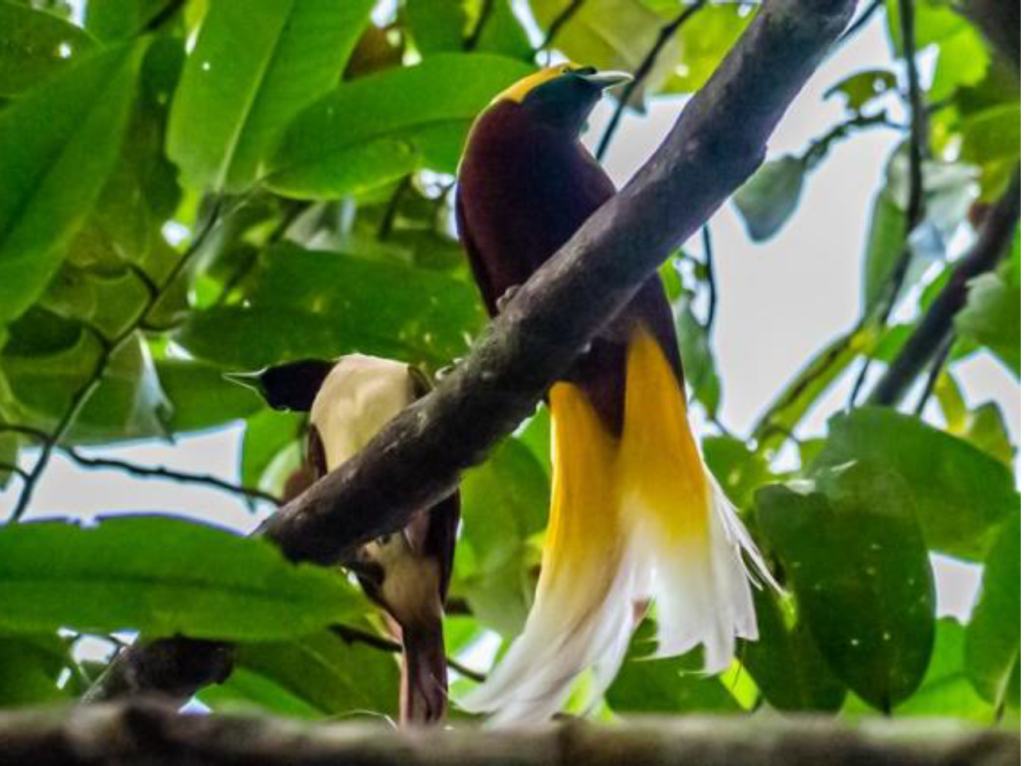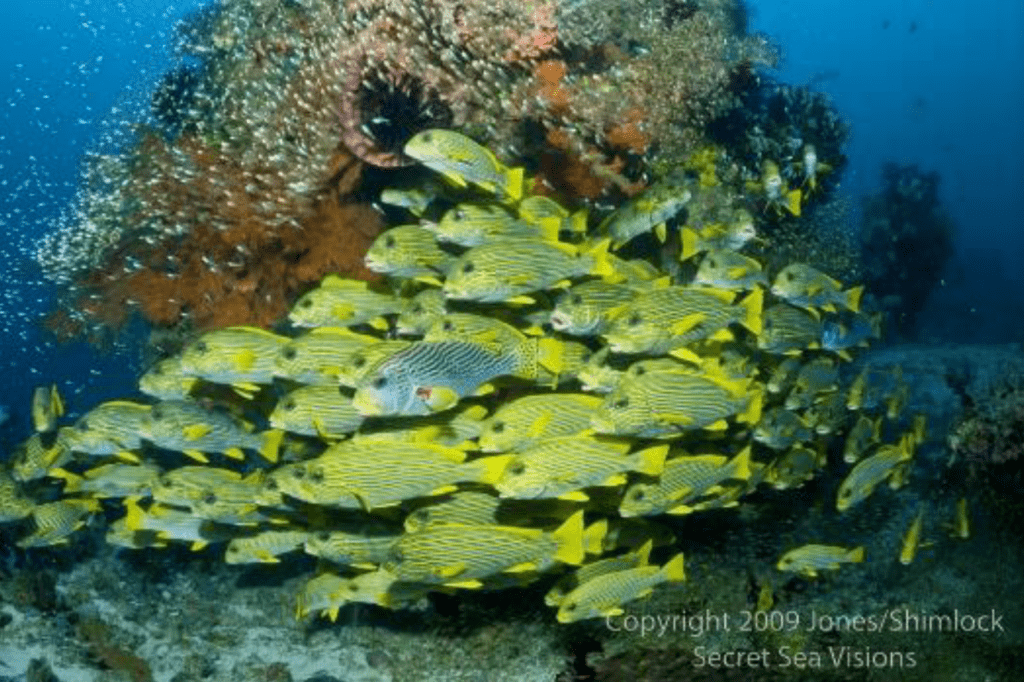Kalawai Adventure Trip Journal by Geoffrey Gearheart PhD
Administrator’s note: The experience provided by Dr. Geoffrey Gearheart and Kalawai Adventure is not a typical dive trip. They are “naturalist expeditions” lead by scientists to some of the remoter areas of the Bird’s Head Seascape. The following is a trip report from their most recent expedition.
We have just returned from another amazing trip to West Papua. This year, we made some substantial changes to our itinerary. We still covered the essentials: north Raja Ampat, the Bird’s Head Peninsula and Cendrawasih Bay, but added some exciting side trips. On West Waigeo (one of Raja Ampat’s main islands) after a morning observing the courtship displays of the red birds-of-paradise, we sailed towards stunning Alyui Bay. The bay is home to the Atlas Pearl Farm and the location of a narrow passage between steep karst hills. Along the near- vertical submerged base of these hills there’s an extraordinary reef. A slow current carries you along as you try to take in the sheer diversity of marine life, especially the soft corals growing on logs fallen from the forest above. Here, we are truly at the heart of the Coral Triangle, the world’s epicenter of marine biodiversity.
We sailed on to the last island of Raja Ampat, Piai, where over 17 years ago I helped local non-profit YPP (see the link below to support YPP’s work) establish their successful sea turtle conservation program, which has run uninterruptedly ever since. Piai never disappoints, especially in May, the peak nesting season for the island’s green turtles. Returning year after year and seeing the nesting ritual repeating itself since the dawn of time is something I never tire of. The reefs off Piai are also stunning. The few spots which were bombed prior to YPP’s conservation efforts are recovering quickly; sharks and turtles can be seen on almost every dive.
Our next stop was the Wayag archipelago, one of the wonders of the world. We had its majestic karst hills and lagoon all to ourselves. It is difficult to describe the mystical beauty of Wayag, the silence of its waters, the hues of turquoise changing with the sun’s position in the sky. Coral in the inner recesses of the archipelago is nothing short of stunning. We climbed two steep karst “mushroom” hills to see Wayag from above.
After two days at Wayag, we lifted anchor heading to Jamursba, on the Bird’s Head Peninsula (mainland West Papua). Jamursba is home to the largest nesting site of the Pacific leatherback sea turtle. May is the early nesting season for these critically endangered behemoths (the largest sea turtle species). We were met with disappointing news: the University of Papua (UNIPA) patrollers told us that very few leatherbacks had come to nest. Something had caused a delay in their arrival. We spent our first night waiting in vain… Jamursba feels like one of the most remote places on Earth. The nearest city is 10 hours sailing away and with no road access it is a paradise for wildlife. We didn’t give up hope to see a leatherback and returned the next night. Several olive ridley turtles showed up as soon as it got dark, but still no sign of their giant cousins… Finally, well past midnight, one of the patrollers came to us with the good news: a leatherback was nesting on the next beach! After so many hours of waiting we were up on our feet in seconds! Seeing the giant turtle lay her eggs, close and camouflage her nest, and then disappear into the dark waters of the Pacific was certainly a highlight! We returned to the ship feeling a mission accomplished.
Only 30 km separates Jamursba from Weyos Bay, which I first explored 13 years ago. It is even more difficult to access, for one must jump off the speedboat and swim through the strong shore-break to reach terra firma. Weather had been perfect since the beginning of the trip and the smooth seas allowed us to land safely. The trek along the river took us straight up the mountain. Our Papuan guides had never ventured this far into Weyos, so I was leading the charge, trying to remember which of the river’s forks would lead us to our destination: a beautiful waterfall which Liz and I discovered in 2011. Unfortunately, due to exhaustion we had to return to the ship, painfully close to our goal. The trek through this virtually untouched piece of wilderness was not short of wonders: hornbills, birds-of-paradise, imperial pigeons, wild boars and even a fresh dropping from a giant cassowary!
We continued our Eastbound course to Manokwari, where we stopped a few hours to resupply fresh fruit and vegetables from the city’s market. Manokwari is the gateway to Cendrawasih Bay, Indonesia’s largest Marine National Park. It’s a 24-hour sail to reach Kwatisore, located on the southernmost tip of the bay. The whale sharks were waiting for us. We spent two glorious days snorkelling with these friendly giants, which were congregated around a “bagan” fishing platform. The fishermen, very happy with our presence (this is a mutualistic chain where visitors pay the bagans who then throw bycatch into the water to keep the sharks interested) treated us with a special net lift. We climbed aboard the bamboo structure in the middle of the night and saw the whole process. Whale sharks appeared as by magic, undoubtedly attracted by the vibrations of the wriggling fish in the net. The men from the bagan caught some strange looking hairtail ribbon-fish and many anchovies, which they proceeded to turn into a delicious impromptu ceviche, just for us.
The next morning, we walked through the mangrove forest and up the mountain to the display trees of the Lesser bird-of-paradise. Natural magic was awaiting us. Never had we seen such an intense courtship display. The males, piqued by the presence of some extremely attractive females, put up a show for the ages! Some of the birds flew down from the canopy and displayed their wonderful dance moves less than 5 meters above our heads.
After these exceptional days in the southernmost recess of Cendrawasih Bay we lifted anchor and started our slow journey back. We still had a few days of exploration left. After discussing different options, we decided to visit a remote peninsula. As one cannot just land in a random spot in Papua, we had to find the nearest village to ask for permission and local guidance. We found a charming little “kampung” nestled in a small bay and introduced ourselves to the village chief. He was delighted to see foreign visitors. We were able to find a local guide to take us into the jungle that same night. Later in the evening, we boarded the speedboat and travelled to the next bay where we landed on a cobblestone beach. Using our headlamps, we walked for a solid hour through the dense forest and saw a host of interesting nocturnals: bandicoots, a pademelon, frogs, a bearded dragon and a myriad of interesting insects. Our walk that night was reminiscent of Weyos, for it had this overwhelming feel of raw, untouched nature. When we got back to the beach, another surprise awaited us: countless fireflies were glowing in sync in the trees. We were there just in time for their mating dance. Humbled by this beautiful light show we left the peninsula.
The next day, we stopped near an atoll somewhere in the middle of Cendrawasih Bay. We SCUBA dove and snorkelled for a few hours along an impressive coral wall that drops almost vertically from -3m to -800m. This was the last day of our adventure. We left the ship in Manokwari the next morning to board our Jakarta-bound flight. Switching within a few hours from the wild land of New Guinea to a city of millions is nothing short of a jolt to the system. In those moments I have only one desire: return to Papua!
You can support the “Papua sea turtle conservation fund” by making a tax-deductible donation. More info here: http://www.geoffreygearheart.com/conservation-fund
Photography: Jones & Shimlock (https://www.secretseavisions.com/); C. Bull (www.caughtincolour.com.au); J. Roberts





































